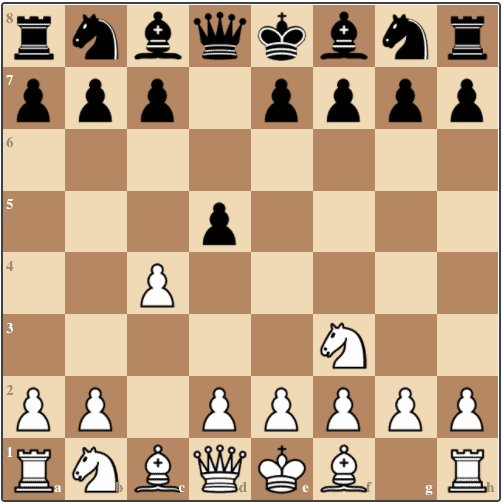The Pirc and Modern Defense
The Pirc and Modern Defense
---------------------------------------------------------------------------------------------
Surprise your opponent with the Pirc or Modern Defense
In the beginning of the 20th century, hyper-modernism made its appearance in chess. Since then, many chess players have finally discovered its ‘dark side’ (the dynamic style); the chess game proved to be richer than it had been thought to be before, and it began to change, from classical chess to a more active and unpredictable game.
As a consequence of this development, new openings were tested. In some of them, the influence on the centre was exerted from a distance.
This blog is about two such systems: the Pirc and the Modern Defence.
Pirc 1.e4 d6 2.d4 Àf6
Modern 1.e4 g6
Both systems have long since established them selves as a universal opening weapon for the creative player
The failure of many attempts to refute Black’s defence outright with a quick occupation of the centre and a straight assault (such as the Austrian Attack with f2-f4) prove that it is still very much alive and kicking.
The main opening resources and pawn structures...
White:
* maintain his centre and develop
* attack in the centre (e4-e5)
* attack on the kingside (h2-h4)
* a typical at tacking set-up with pieces is f3 / B-e3 / Q-d2/B-h6 etc...
Black:
* usually pre pares ...e7-e5
* the universal set-up with ...c6-b5
* the modern set-up with ...a6-b5
* some times the Sicilian Dragon structure appears after ...c7-c5
* Benoni structure: ...c7-c5 and White replies d4-d5
* King’s Indian: ...e7-e5, and White’s d4-d5
* Ruy Lopez: ...e7-e5
* Philidor: ...e7-e5 and ...exd4
This list of options shows the great flexibility of the combative Pirc-Modern Defence. Many times we can see motifs from the Sicilian, the Benoni and certain other openings, and also transpositions, in a single game.
The Pirc-Modern Player
From the beginning, White can choose to go for forced and aggressive lines, or he can also choose among many positional plans, trying a different playing style every time. However, most of the time the character of the positions and the play in the Pirc-Modern set-up is ultra-dynamic.
Nowadays, the Pirc-Modern remains in the repertoire of many players as a nice dynamic option in must-win situations with black. On the other hand, it is also played by super grandmasters such as Ivanchuk, Grischuk, Kramnik and Nakamura who know perfectly well how to use the ‘active-side’ of their chess talent. This perspective allows them as it were to take the chess game into a new dimension.
The Pirc-Modern player doesn’t need to have a phenomenal memory combined with some wishful thinking. He should first of all get the feel of this fascinating opening, and then use his fighting spirit!
---------------------------------------------------------------------------------------
The Modern Defense
--------------------------------------------------------------------------------------
with a6...
1.e4 g6 2.d4 B-g7 3.N-c3 d6 4.B-e3 a6
The idea behind this move is similar to 4...a6 in the Sicilian Najdorf. Black intends to expand on the queenside with b5 and attack the e4-pawn with B-b7, N-f6 and maybe b5-b4.There is only one problem with that set-up here: White can meet N-f6 with e4-e5. Therefore Black must weaken White's control of the e5-square before playing N-f6. This is done by playing B-b7, N-d7 and then c5, intending to exchange the c-pawn for White's d-pawn. In this way Black undermines White's d-pawn, gains control of e5, and then the knight can go to f6 without fearing e4-e5. Note that this idea would be worthless if White's knight was not on c3 already. White must have played N-c3 or else b5 will strike thin air and c5 will be easily met by c3.
Black can also convienentily adopt a hippo set-up from this move-order.
with c6...
1.e4 g6 2.d4 B-g7 3.N-c3 d6 4.B-e3 c6
The queen is often well-placed on c7, where it supports e7-e5 and stops e4-e5.
The queen can also swing to a5, threatening Nf6 x e4.
If White screws around, Black can play either d5, claiming an equal share of the center, or b5, threatening to undermine the defense of White's pawn on e4.
If Black feels like living dangerously with Nb8-a6, the knight can quickly find a home on c7…
It's a waiting move; Black gets to play a noncommittal, but useful move while he waits to see where White will put his pieces, in particular, his king.
If white goes with Be3 and Qd2 plan (standard long castle thing), c6 supports b5 combined with knight maneuver b8-d7-b6-c4. If white doesn't do anything about that knight, black is going to exchange knight for bishop in e3. Black is also happy if white exchanges the e2 bishop to c4. Black is also happy if white takes away the c4 square by playing b3, as it weakens the dark squares in the diagonal of g7 bishop. Against white's long castle plan b5 is of course quite useful by itself too.
----------------------------------------------------------------------------------------


No comments:
Post a Comment